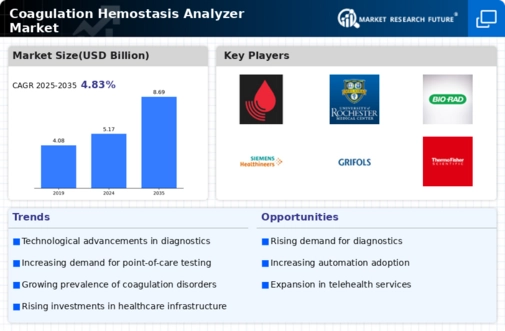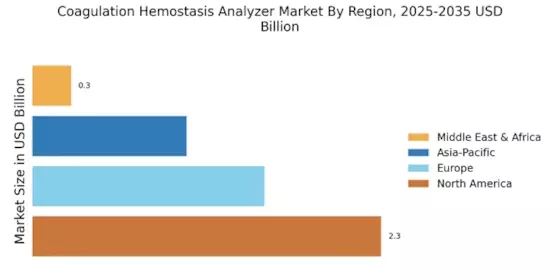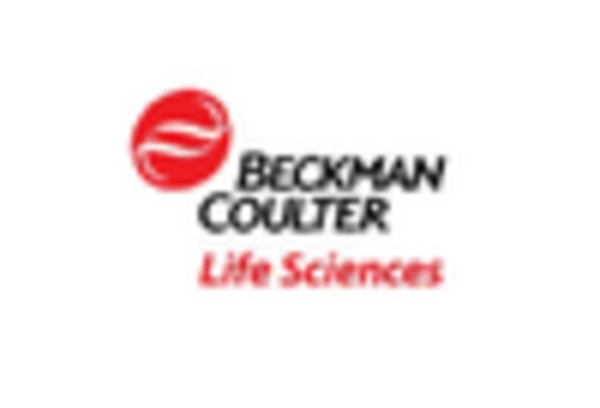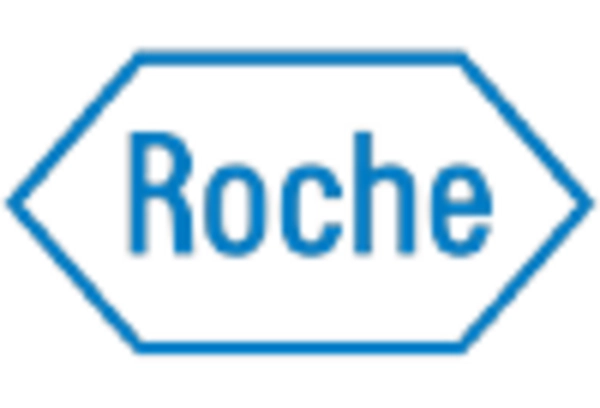Rising Prevalence of Blood Disorders
The Coagulation Hemostasis Analyzer Market is significantly influenced by the rising prevalence of blood disorders, including hemophilia, thrombosis, and other coagulation-related conditions. According to recent data, the incidence of these disorders is increasing, leading to a higher demand for effective diagnostic tools. This trend is particularly evident in regions with aging populations, where the risk of developing such conditions is elevated. The need for accurate and timely diagnosis is paramount, as it directly impacts treatment outcomes. Consequently, healthcare providers are increasingly investing in advanced coagulation analyzers to meet this growing demand, thereby propelling market growth.
Regulatory Focus on Quality and Safety
The Coagulation Hemostasis Analyzer Market is also shaped by a heightened regulatory focus on quality and safety standards in medical devices. Regulatory bodies are implementing stringent guidelines to ensure that coagulation analyzers meet high-performance benchmarks. This regulatory landscape encourages manufacturers to invest in research and development to enhance the reliability and accuracy of their products. Compliance with these regulations not only fosters consumer trust but also opens up new market opportunities for companies that can demonstrate superior quality. As a result, the market is likely to witness a shift towards more sophisticated and compliant coagulation analyzers.
Increasing Demand for Point-of-Care Testing
The Coagulation Hemostasis Analyzer Market is witnessing a notable shift towards point-of-care testing (POCT) solutions. This trend is driven by the need for rapid diagnostic capabilities in various healthcare settings, including emergency departments and outpatient clinics. POCT devices offer the advantage of delivering immediate results, which is crucial for timely clinical decision-making. The convenience and efficiency of these analyzers are appealing to both healthcare providers and patients, leading to increased adoption rates. Market analysts project that the segment for point-of-care coagulation testing will expand significantly, reflecting the growing preference for decentralized testing solutions.
Growing Awareness and Education on Coagulation Disorders
The Coagulation Hemostasis Analyzer Market is benefiting from increased awareness and education regarding coagulation disorders among healthcare professionals and the general public. Educational initiatives aimed at improving understanding of these conditions are leading to earlier diagnosis and treatment. As awareness grows, so does the demand for reliable diagnostic tools, including advanced coagulation analyzers. This trend is particularly evident in regions where healthcare systems are prioritizing the management of chronic diseases. Consequently, the market is expected to expand as more healthcare facilities seek to equip themselves with the necessary tools to address the rising incidence of coagulation disorders.
Technological Advancements in Coagulation Hemostasis Analyzers
The Coagulation Hemostasis Analyzer Market is experiencing a surge in technological advancements, which are enhancing the accuracy and efficiency of diagnostic processes. Innovations such as point-of-care testing devices and automated analyzers are becoming increasingly prevalent. These advancements not only streamline laboratory workflows but also reduce the time required for test results, which is critical in emergency situations. The integration of artificial intelligence and machine learning algorithms into these analyzers is also noteworthy, as it allows for improved predictive analytics and personalized medicine approaches. As a result, the market is projected to grow at a compound annual growth rate of approximately 6.5% over the next few years, driven by these technological innovations.


















Leave a Comment